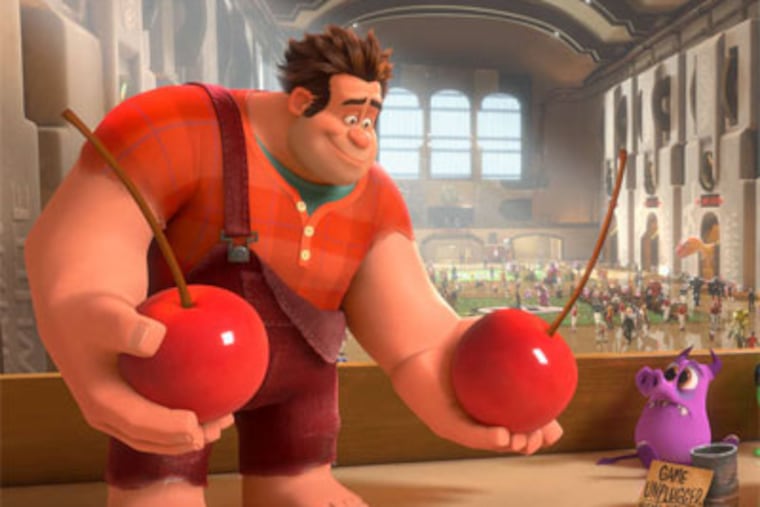'Wreck-It Ralph': A video-game villain looking for respect
Ralph isn't a villain, but he plays one in a 1980s-era video game. It's called Fix-It Felix, Jr. Note who gets the game's star billing.

Ralph isn't a villain, but he plays one in a 1980s-era video game. It's called Fix-It Felix, Jr. Note who gets the game's star billing.
When a player puts her quarters in Fix-It Felix, Ralph, a wrecking ball disguised as a muscleman, decimates a city block. Quicker than Ralph can shatter windows and masonry, Fix-It Felix (think Bob the Builder) repairs them with his neon hammer. For this he wins medals and the love of the citizens of Niceland, who shun Ralph as a bully.
But Ralph is determined to change his reputation in the diverting Disney animation Wreck-It Ralph. Though Ralph imagines video-game characters in identity crisis, the movie fails to communicate their inner lives. In other words, this pleasant diversion lacks the emotional pull of Toy Story.
After 30 years of being jeered as demolition man while Felix gets cheered as rebuilder, Ralph (voice of John C. Reilly) joins a support group that includes other vid-game villains looking for a little r-e-s-p-e-c-t. The group includes Pac-Man and Bowser from Super Mario. To paraphrase classic toon vixen Jessica Rabbit, they're not bad - they're just drawn that way.
Ralph is emboldened to seek his destiny outside the fixed rules of Fix-It Felix, escaping through a charger cable to see if he might be a hero in another arcade game. He commences his search for validation in the movie, which fuses the narratives and visuals of Tron and The Wizard of Oz before it exiles Ralph to a retro video game called Sugar Rush, which resembles an arcade Candy Land.
For the adult viewer who picks up the references, the effect is mind-bending. The 8-year-old for whom the movie is intended will be too enthralled with the electric-Kool-Aid color and with Ralph breaking the rules of the game to notice.
Like the cowardly Lion from Oz who wants a medal for bravery, Ralph wants a prize of his own. Venturing to a video game called Hero's Duty, he aids Sgt. Calhoun (Jane Lynch, armed with wisecracks and something semiautomatic) and gets his gold.
Then the villain who would be hero surfaces in the video game Sugar Rush. There, he befriends Vannelope von Schweetz (Sarah Silverman, chirpily funny), an outcast believed to be an electronic "glitch," a programming error. Naturally the villain rehabilitating himself comes to the aid of the girl trying to redeem herself. Like a video game, Rich Moore's 3-D film is colorful, noisy, and pixel-deep.
EndText